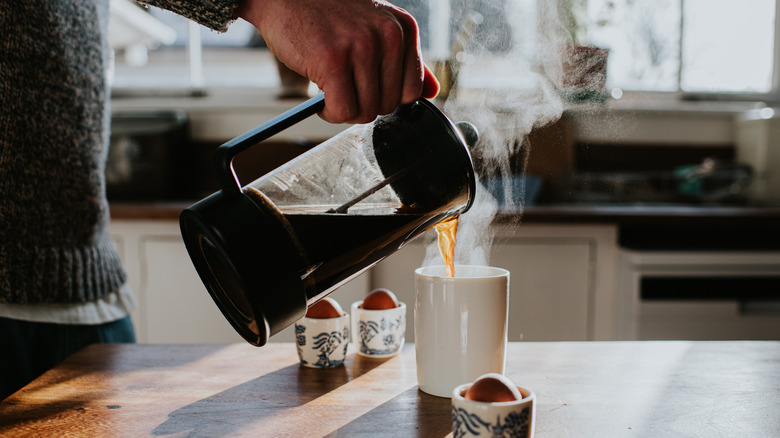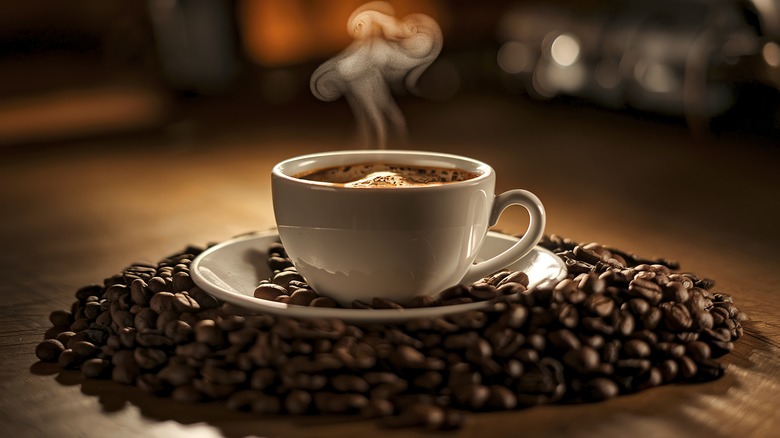The Common Coffee Myth People Should Stop Believing
When you first wake up, there are few better feelings than sipping that first cup of coffee. But when it comes to coffee, there are a lot of myths going around that can actually make your morning cup of joe worse. Key among them: using too many coffee grounds.
You may be surprised to hear that adding more coffee grounds to your pot does not, in fact, result in more caffeine in the cup. By all means, it sounds like it should, but getting caffeine out of coffee is more complicated than that. The primary reason adding extra grounds doesn't work is because your coffeemaker can only extract so much caffeine from the grounds before you hit a point of over-extraction, which means you've pulled out too much of the soluble compounds in the coffee beans.
Over-extracted coffee tastes bitter and acidic, and once you take a sip, you'll see it is far from a good start to your day. So, how do you get that extra caffeine boost and make a quality cup at the same time? A lot of factors go into the perfect cup of coffee, and all of them matter much more when determining your morning joe's caffeine content than the actual amount of grounds.
What determines your coffee's caffeine content
One of the biggest factors to consider when making quality coffee with plenty of caffeine is the type of roast you use. You might think that dark coffee has more caffeine, but think again. Dark coffee is roasted longer, which means that it loses more mass during this process and also more caffeine. In addition, the finer the grind of the coffee, the more caffeine in the cup. That's because finer grinds have more surface area that can come into contact with the water.
There are plenty of different coffee-making techniques, and each one will net you different flavors and caffeine amounts. Since caffeine is very soluble in hot water, more heat and longer extraction time get you more caffeine. A French press is an underrated coffee-brewing method that involves a long steep time, which means more caffeine — though be careful not to overdo it. If you want an even amount of caffeine in each cup from a pot, you can make a big mistake by not pouring hot water over your coffee to bloom it, since caffeine tends to rise to the top of the coffeepot.
Perhaps the two most important things for a good cup of coffee are the water-to-grounds ratio and the temperature of that water. We like a golden ratio of one part coffee to 17 parts water. Shoot for a temperature of 195 to 205 degrees Fahrenheit. Get both of these factors just right, and you'll have a heavenly cup of coffee that you can enjoy every morning.

